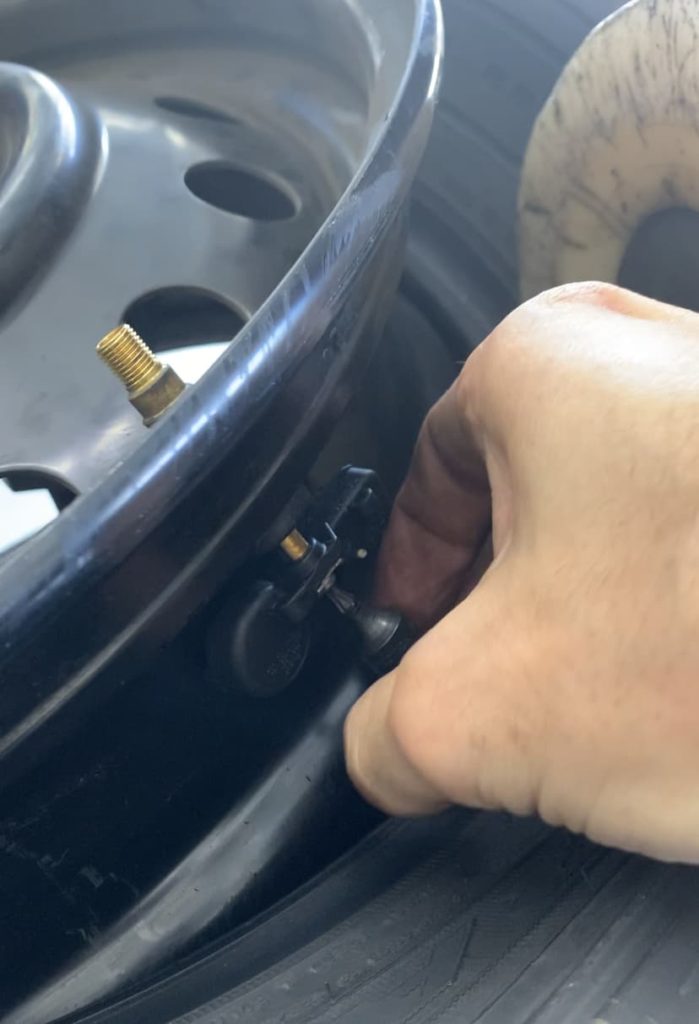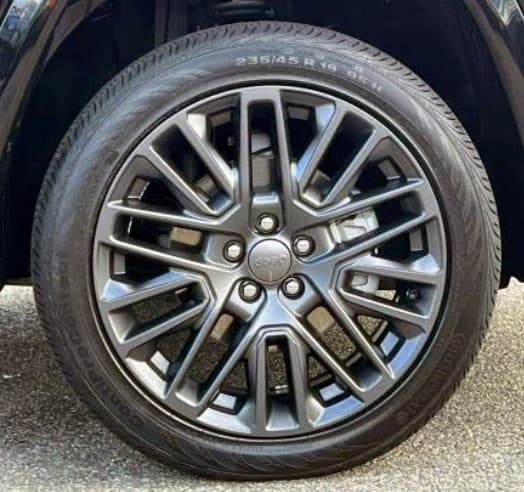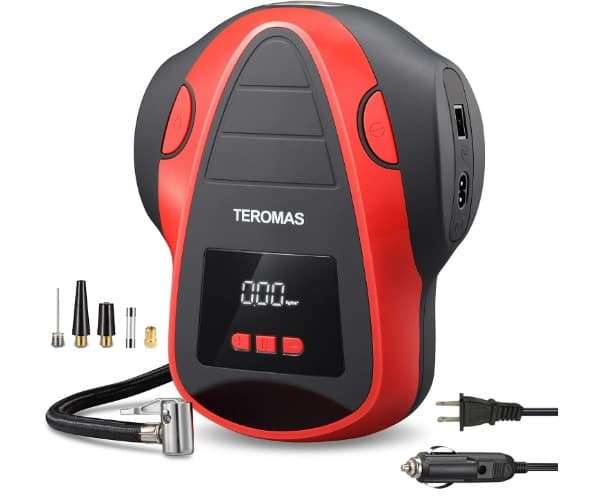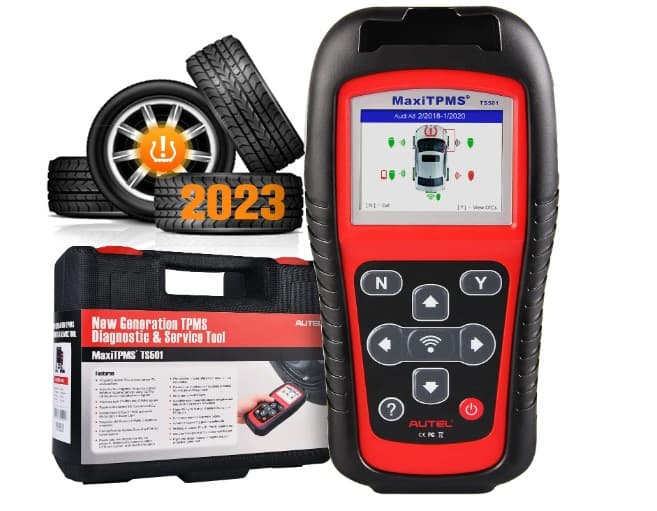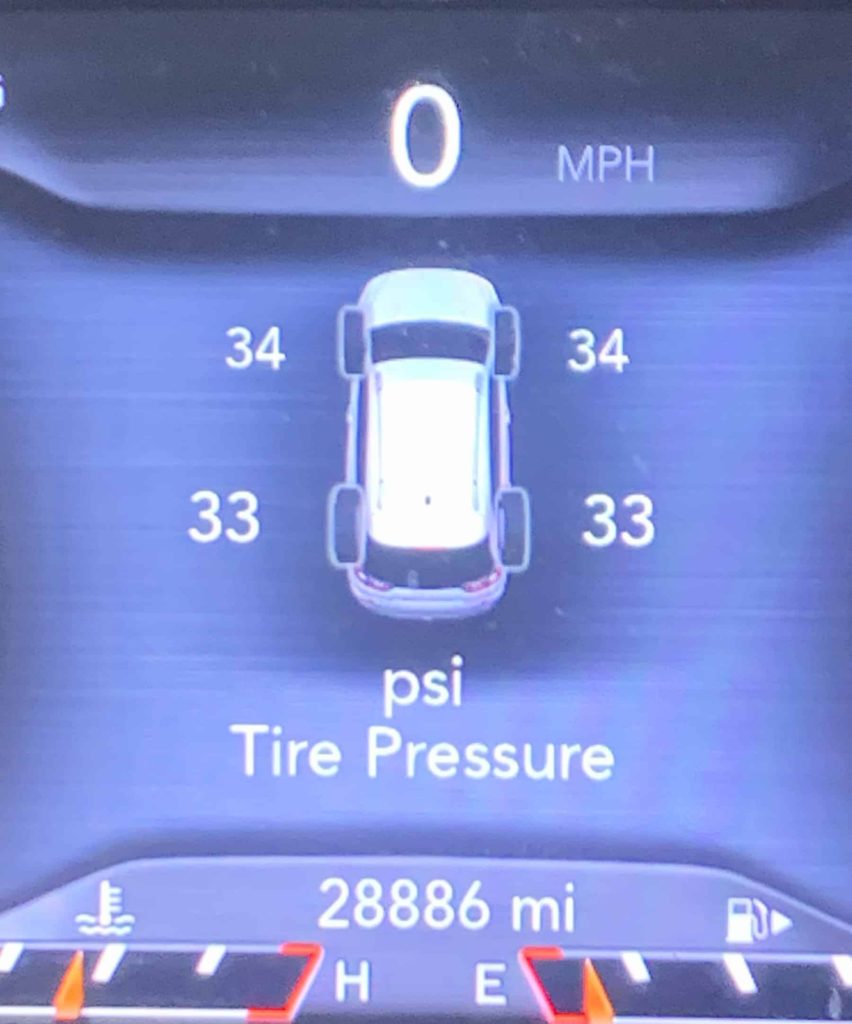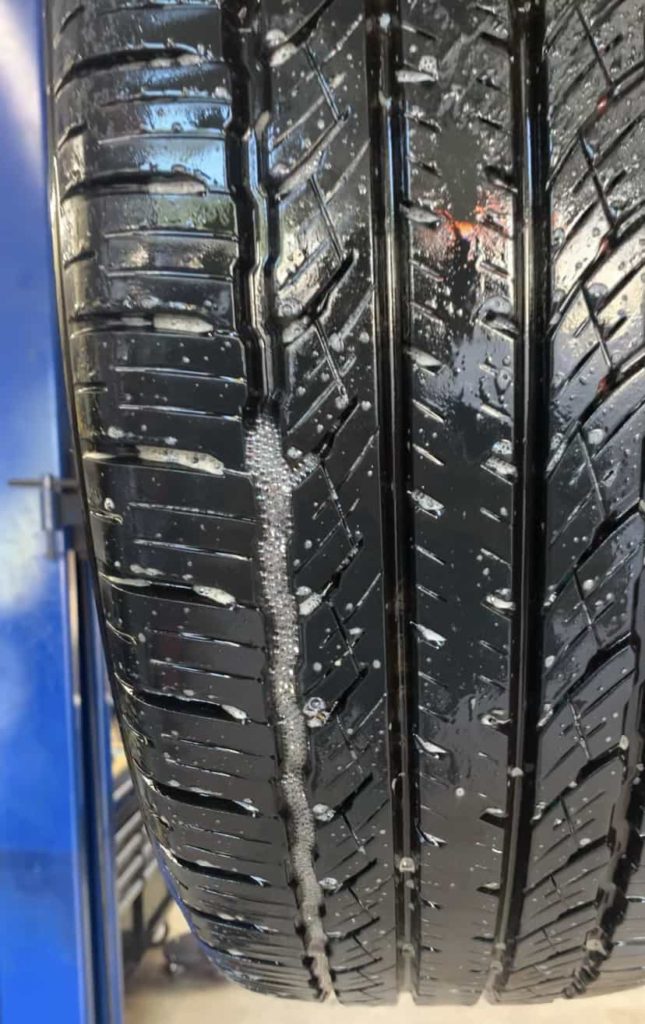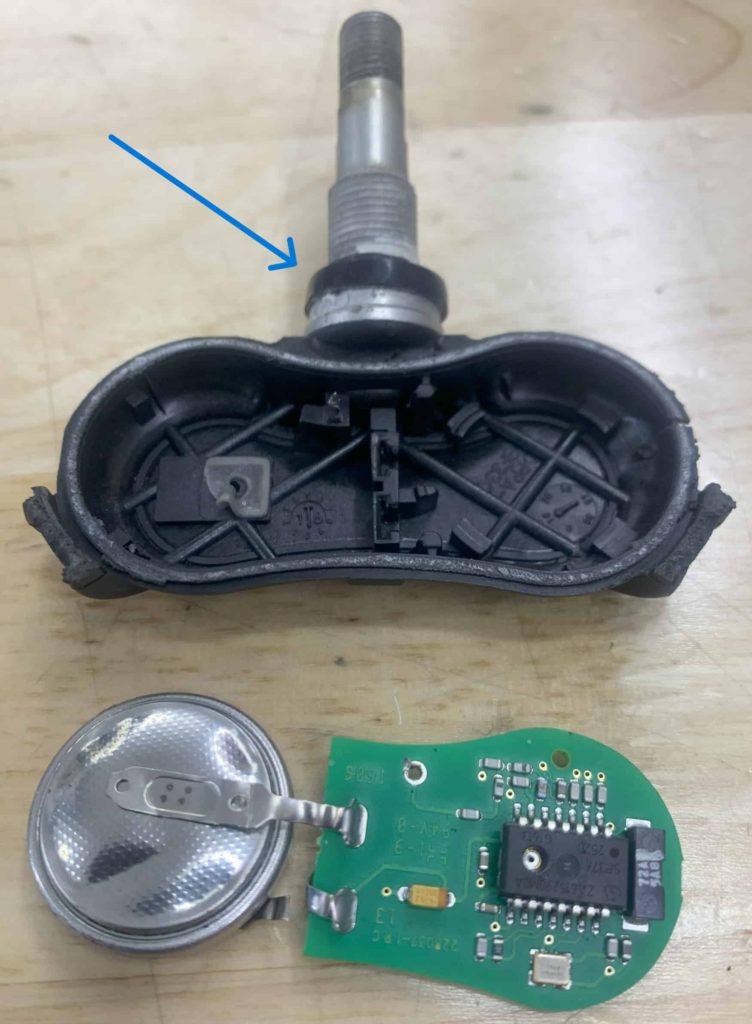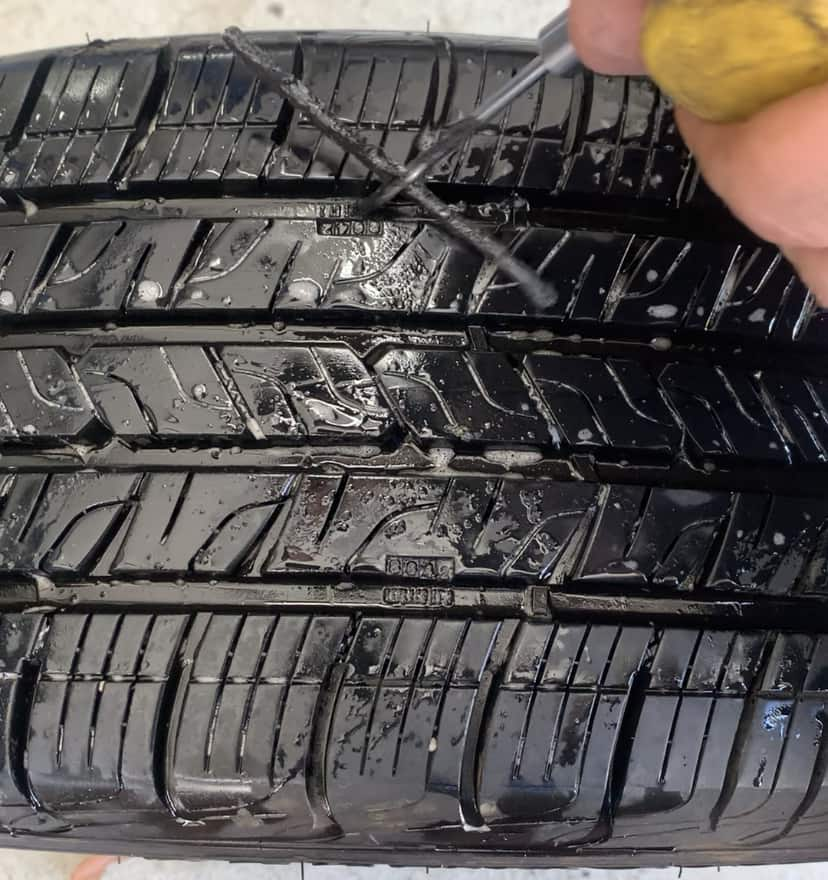How Does the Jeep Compass Tire Pressure Monitoring System Work?
The Tire Pressure Monitoring System (TPMS) in a Jeep Compass is designed to alert the driver when the tire pressure in one or more of the vehicle’s tires is outside the acceptable pressure range. Here’s an explanation of how this system works:
Sensors: Each wheel and tire has a pressure sensor mounted inside. These sensors are attached to the valve stem inside the tire itself. They each monitor the air pressure and temperature within the tire.
Radio Frequency Transmission: The sensors transmit the pressure data via radio frequency (RF) signals to a central control module called a TPMS receiver module. This transmission occurs at regular intervals or when a significant change in pressure is detected.
Control Module: The control module also known as the TPMS receiver module, receives the signals from all the sensors. It interprets the data and compares the pressure readings with Jeep’s recommended tire pressure levels.
Alerts and Warnings: If the pressure in any tire falls below or exceeds the predetermined range (set by Jeep) , the TPMS module triggers a warning. The warning is a yellow exclamation mark as well as a message on the instrument cluster such as “Tire Low” or “Inflate to X PSI”.
Jeep Compass Tire Pressure Light Reset Procedure
Correct the Air Pressure in all Tires: If the tire pressure light is on, fill the tires to the recommended pressure. You can find this information if you open the driver side door, find the yellow and white sticker and look at the front and rear cold recommended pressures.
Drive the Jeep Compass: After filling the tires, drive the car for about 20 minutes at a speed above 15 mph. The light should turn off.
What Can Cause the Jeep Compass Low Tire Pressure Light to Turn On?
Sensor Malfunctions in TPMS: The Jeep Compass TPMS may not work properly if sensors are faulty or if their batteries are weak.
Tire Air Pressure loss: Air loss can occur from temperature changes, tire punctures, valve stem leaks, bead seal leaks, structural damage to the wheel (cracked wheel), structural damage to the tire (tire bubble), altitude changes, natural pressure loss, and tire dry-rot.
Confusion After Tire Rotations: Without resetting the TPMS after a tire rotation or replacement, the warning light may come on due to the system confusing tire positions.
TPMS Sensor Breakage During Installation: A TPMS sensor can easily be broken if care is not taken when mounting a new tire.
Inappropriate Tire Pressure: Problems can arise from inflating tires to pressures that are either too high or too low.
Interference from Similar Radio Frequencies: Devices emitting frequencies in the same range as TPMS sensors (315 Mhz or 433 Mhz) may lead to interference and result in wrong pressure values or a TPMS malfunction..
Physical Harm to the TPMS Receiver: Damage to the wires or connectors connected to the TPMS receiver module might result in a TPMS malfunction.
Wheels without Sensors: If wheels without tire pressure sensors are installed on the Jeep Compass, the tire light will malfunction. The spare tire does not have a tire pressure sensor in it.
Why is the Jeep Compass Tire Pressure Light Blinking?
A tire pressure malfunction in the Jeep Compass is when the TPMS receiver module stops communicating with one or more tire pressure sensors. If this happens, the tire pressure warning light (yellow exclamation mark) will flash on and off for about 75 seconds and then stay on. The instrument display screen will also read “SERVICE TPM SYSTEM” This will happen everytime you start the engine on your Jeep Compass until the malfunction is fixed. Remember, a TPMS malfunction is not a low tire pressure issue, it’s an issue with the tire pressure monitoring system itself.
Understanding Tires
Does the Weather Affect the Jeep Compass Tire Pressure?
In the Jeep Compass, weather can significantly affect tire pressure. Cold temperatures cause the air inside the tires to contract, leading to a decrease in pressure. Warm temperatures cause the air to expand, potentially increasing the pressure (tires heat up as they are driven) . The Tire Pressure Monitoring System (TPMS) in the Jeep Compass is designed to monitor these changes and alert the driver if the pressure falls outside the recommended range. A common guideline states that for every 10-12°F degree change in weather, tire pressure will change by 1-2 Psi.
What is "COLD" Tire Pressure?
“Cold” tire pressure refers to the measurement of air pressure in a tire that has been at rest and not driven for at least three hours, or driven less than a mile at low speeds. This “cold” state ensures that the heat generated from driving has not influenced the tire’s pressure, providing a stable and accurate reading that aligns with the Jeep Compass tire recommendations. This is why tire placards always refer to tire pressure as Cold Tire Pressure recommendations. This is to prevent overfilling and underfilling tires.
How to Check Jeep Compass Tire Pressure
Find the Recommended Pressure: Open the driver side door and check the front and rear recommended tire pressures on the yellow and white sticker.
Wait for the Tires to Cool: Ensure the Jeep Compass tires are COLD
Use an Accurate Pressure Gauge: Use a digital tire pressure gauge
Remove the Valve Cap: Unscrew the valve cap on the tire you are checking. Don’t lose it!
Measure the Pressure: Press the tire gauge onto the valve stem and hold it down firmly to get a reading. Note the pressure and compare it to the recommended pressure.
Adjust if Necessary: If the pressure is not at the recommended level, inflate or deflate the tire as needed. Always adjust the tire pressure to the exact recommended values.
Replace the Valve Cap: Reinstall the valve stem cap to prevent moisture and dirt from entering the valve stem.
Repeat for All Tires: Check and adjust the pressure for all 4 tires and check the spare tire as well!
2022 Jeep Compass Wheel Size and Tire Pressure
TIRE SIZE | FRONT PSI | REAR PSI |
215/65R16 | 35 | 32 |
215/65R17 | 35 | 32 |
225/55R18 | 35 | 32 |
225/60R17 | 35 | 32 |
235/45R19 | 35 | 32 |
SPARE | 60 | 60 |
Impacts of Driving The Jeep Compass With Low Tire Pressure
Driving with low tire pressure in a Jeep Compass can lead to several issues:
Safety Concerns: Low tire pressure increases tire flexing which can lead to overheating and potential tire failure.
Reduced Fuel Efficiency: Underinflated tires create more rolling resistance (more friction), causing the engine to work harder and consume more fuel.
Uneven Tread Wear: Tires with low pressure wear unevenly along the edges of the tread. This will dramatically reduce their lifespan and potentially affect the vehicle’s alignment.
Impaired Handling: The SUV may drift to one side and handle poorly. Road noise will also increase.
Troubleshooting the Jeep Compass Tire Pressure Light
If you are having issues turning off or resetting the Jeep Compass tire pressure light, here are 5 solutions you can try:
Solution 1: Is there a Tire Losing Air?
The primary cause for the low tire pressure light to illuminate in the Jeep Compass is typically due to low tire pressure resulting from a leak. If you fill the tire that’s low on pressure and the warning light turns off or resets after following the reset procedure, only to reappear shortly afterward—regardless of how long it takes, minutes, hours, or days—it’s a strong sign that there’s a leak in the tire or wheel.
Solution 2: Manually Erase Tire Pressure DTC From ECU
If the tire warning light on the Jeep Compass persists and other solutions don’t fix the problem, you can erase the temporary TPMS error codes in the vehicle’s computer. This can be done by disconnecting the main 12-volt battery. This step cuts the power to the Engine Control Unit (ECU), erasing all temporary DTC error codes including the one causing the tire pressure light to activate. Once you reconnect the battery, the Jeep Compass will enter a “relearning” phase. To “relearn” the sensors, drive at a steady speed of 50 Mph for at least 30 minutes. Should the tire light turn off after this procedure but reappear later, it could indicate that a tire pressure sensor’s battery is running low and the sensor needs to be replaced.
Solution 3: How to Find Which Jeep Compass Tire Sensor is Low on Battery
If the tire pressure light activates and you suspect it might be related to a weak battery in one or more of the tire pressure sensors (evident by the tire light blinking before remaining on), you can test each sensor using a TPMS diagnostic tool. This procedure is consistent, regardless of the specific brand/make/model of TPMS diagnostic tool you have. To check each sensor, position the TPMS tool next to the valve stem and choose the “test” or “trigger” option. Once you’ve assessed all four sensors, the tool will give you a summary of the battery condition for each. Should any sensor display a “low” status, fail to offer a status update, or not register at all, that particular TPMS sensor must be replaced.
Solution 4: The Tire Light Turns On and Then Turns Off On its Own
If the tire pressure light in your Jeep Compass illuminates upon starting the vehicle but extinguishes as you drive, it’s an indication that the tire pressure is slightly below the necessary level. This situation might happen when the tires are cold, like before the car has been driven or on a cold morning, and then warm up as you drive. To address this, inspect and modify the pressure in all four tires. Be sure the front tires are at exactly 35 Psi and the rear at exactly 32 Psi when the tires are cold.
Solution 5: Overinflated the Tires
A last-resort solution if the low tire pressure light remains on is to deliberately over inflate the tires. To stimulate the sensor into communicating with the TPMS receiver module, first let out around 10 to 15 Psi from the tire, then pump the tire up to the recommended pressure and then by an additional 4 to 5 Psi (39 Psi in the front and 36 Psi in the rear). With the tire now overinflated, drive your Jeep Compass for several miles at speeds exceeding 15 Mph. After the tire light goes out, make sure to set the tire pressures back to the correct pressure values.
How to Find a Leak in a Tire
Begin by examining the air pressure in all four tires of the Jeep Compass to pinpoint the one that is low on air. Pump up the underinflated tire to at least 35 Psi. Then using a spray bottle filled with a blend of water and soap (or Windex) generously douse the entire tire making sure to cover it completely. Also spray the bead area and the valve stem and be sure that the whole tire is soaked. Allow the soapy mix to rest for a few seconds and then meticulously look over the tire for small bubbles. If there’s a puncture or a leak or some kind, the air escaping will form tiny bubbles at the leak’s origin. Locate the bubbles and you’ve spotted the leak!
TPMS Sensor Batteries
Every wheel on the Jeep Compass comes with its own tire pressure sensor and each is powered by its own battery. They use silver-oxide batteries similar to the ones used in wrist watches. Housed in plastic and directly soldered to the sensor’s microcontroller, these batteries are non-replaceable. Usually over a period of 5 to 10 years, the batteries might deplete or weaken which requires the whole sensor to be swapped out for a new one. The battery’s longevity can be affected by various elements, including driving conditions, weather changes, and the regularity and duration of your journeys.
Common Tire Pressure Monitoring System Questions
Is It Safe to Drive With the Low Tire Pressure Light On?
Anytime your Jeep Compass tire pressure light turns on, you need to stop and figure out what the problem is. The only way to truly know if it is safe to drive or not is to determine why the tire light is on.
Are Tire Plugs Safe?
Yes, tire plugs are safe to use when repairing a puncture on the tread of a tire. I have personally used tire plugs to fix hundreds of tires and as long as they are installed correctly, they are safe. Tire plugs are not safe to use on the sidewall of a tire.
Is it Safe to Use Tire Sealants on Flat Tires?
Tire sealants are safe to use in emergency situations but can potentially create other issues. Tire sealants are a liquid and can sometimes damage the electronics of a tire pressure sensor as well as cause an imbalance in the tire. If you use a tire sealant, bring your Jeep to a professional and have them test the tire pressure sensor as well as clean out the sealant from the tire.
Everything in this article is applicable to all Jeep Compass models and versions including the Jeep Compass Latitude LUX, Sport, Latitude, Limited, Trailhawk, (RED), Altitude and High Altitude.
Please note that this blog post contains Amazon affiliate links. This means that if you make a purchase through one of these links, we at TPMSRESET.COM may earn a small commission at no extra cost to you. We only recommend products that we personally use and believe in. Thank you for supporting us.

